The Rise of Science: Exploring Early Scientific Books in the Cathedral Library
By Felicity Henderson, Senior Lecturer in Archives and Material Culture in the Department of English and Film at the University of Exeter.
The telescope, the microscope, the vacuum pump: all these instruments allowed scientists in the seventeenth century to explore the world in a completely new way. But when it came to explaining their discoveries to the wider public, they turned to an older technology – the printed book.
In our modern society the discourse of science is dominant, but this was not always the case. English scientists in the seventeenth century had to figure out how best to communicate what they had seen – the distant moons of Jupiter, or the microscopic animals living on the surface of a leaf – to audiences who had never imagined such a thing could exist, and often doubted such knowledge could ever be useful. Some of their books contain intricate, beautiful illustrations; others rely on the power of language to get their message across.
The Cathedral Library has a fantastic collection of scientific books published between 1550 and 1750 and every year I ask students on my literature course at Exeter University to choose a book and write a blog post about it, explaining why the book was significant, and showing how the author had tried to win over his audience. It’s wonderful for the students to have the opportunity to sit down with a centuries-old book and see how the typesetting and illustrations might be aimed at wealthy book-buyers, or find underlining and marginal notes suggesting a university student once studied the text. Each individual book is unique, but they all share a sense of the author’s excitement and wonder at the natural world.
Read the student blogs below:
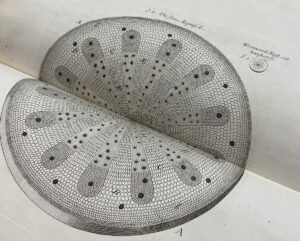
The Anatomy of Plants – Nehemiah Grew (1641-1712)
The Anatomy of Plants – Nehemiah Grew (1641-1712) By Kathryn Briggs Nehemiah Grew’s The Anatomy of Plants (1682) – the full title being The Anatomy
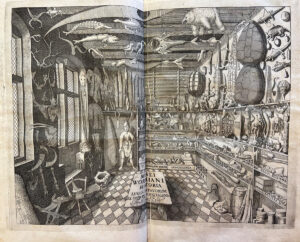
Ole Worm’s Museum Wormianum (1655)
Ole Worm’s Museum Wormianum (1655) By Danielle Greenberg Imagine, if you will, that it is the seventeenth century. Public museums as we know them do
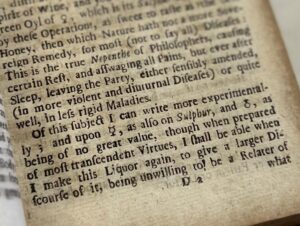
Searching for Nature’s Secrets: George Starkey’s Pyrotechny Asserted and Illustrated (1696)
Searching for Nature’s Secrets: George Starkey’s Pyrotechny Asserted and Illustrated (1696) By Clémence Smith Would you take on a life-long research project if you believed
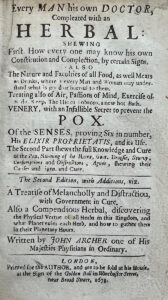
John Archer’s Every Man His Own Doctor
By Zoe Sperry Did you know that eating onions can cause turbulent dreams? Or that artichokes can trigger spells of vertigo? Rest assured these are
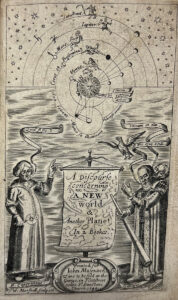
“Journeying to the Moon”: John Wilkins’ lunar civilisation
By Oliver Rickwood How often do you dream about travelling to the Moon? In the 21st century it is far from a ridiculous fantasy; since